Practical Homesteading
If you are looking for practical homesteading tips, you have come to the right place! Today, we have a list of things you can do to incorporate homesteading into your day-to-day life.
Homesteading tips we love that will help you get more in control of your home care and food prep.
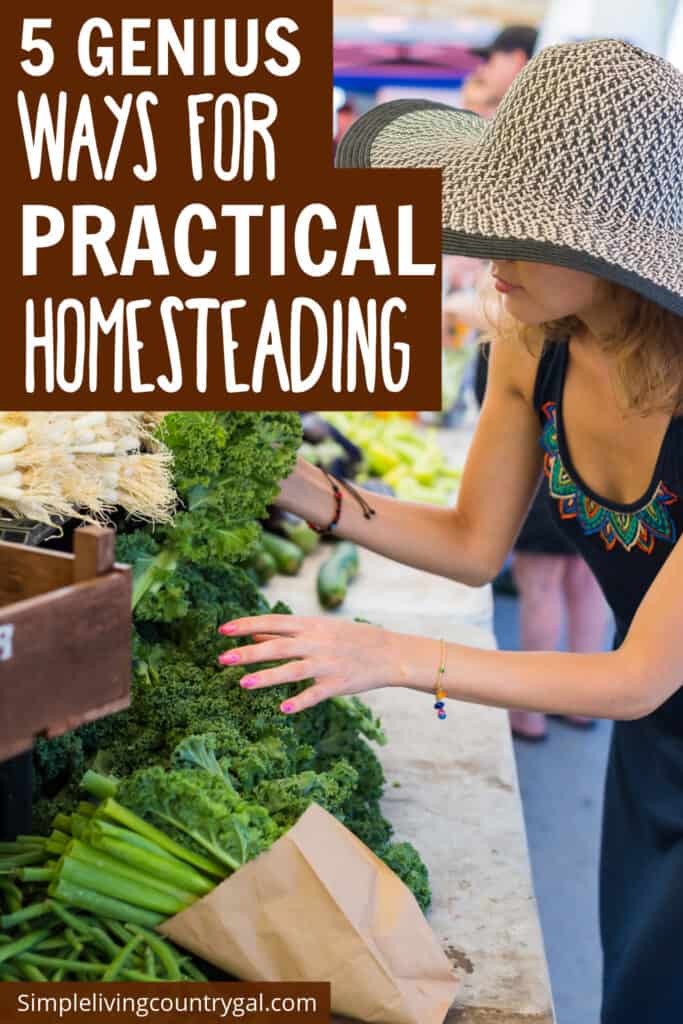
Homesteading may seem like a daunting lifestyle, one that is meant only for those living off the grid, on huge pieces of land in remote areas. That may have been the case years ago, but today things are different and that is great news.
Today, we have practical tips and tricks you can incorporate into your daily life that embrace the essence of homesteading. From preparing clean, wholesome food to using as many natural items for day-to-day care, these ideas will help you feel like a homesteader in no time. Whether you live in a busy city or a quiet suburb, there are ways to bring the homesteading lifestyle into your home.
What is Practical Homesteading?
Practical homesteading is a lifestyle that focuses on self-sufficiency that is realistic in today’s world. It includes simple things you can do right now in your home and kitchen that will put you more in control of how you live.
This approach to homesteading covers growing healthier food, incorporating natural health care with herbs, making cleaners using simple ingredients, and preparing your family and home to live a life based on skills learned and practiced.
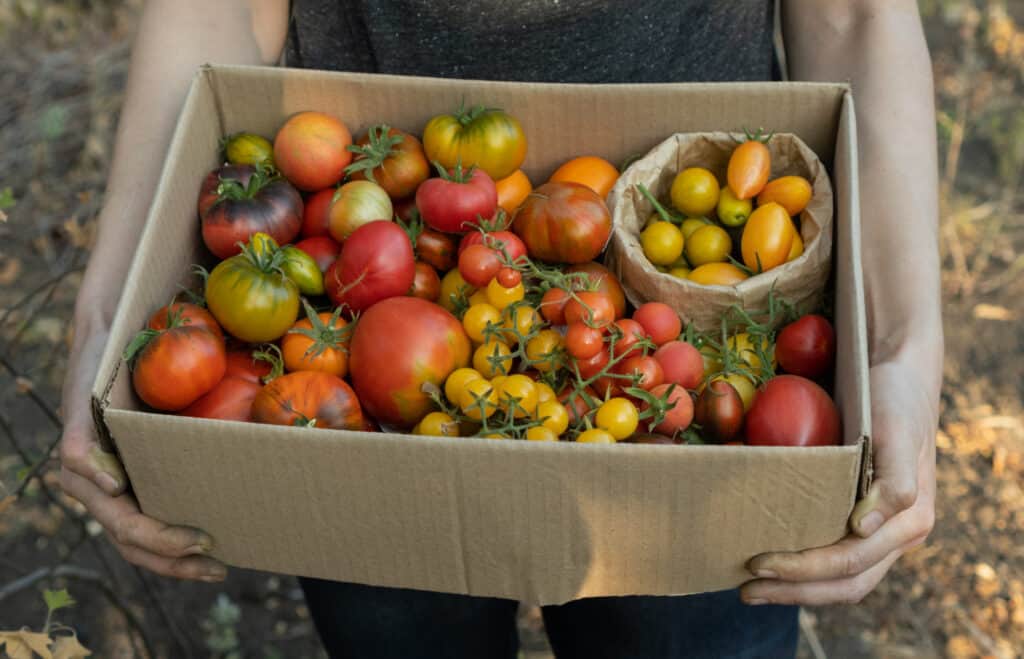
Practical Homesteading Ideas
Let’s look at a few ways you can start adding homesteading to your home.
#1. With Your Food
There is something about fresh produce that completely changes a meal. But not everyone has the time or the space to grow their own garden. The good news is you do not need to have a traditional backyard garden to fill your kitchen with fresh-grown food. Let’s look at a few ideas
- Container Gardening – If you are short on space or time, you can grow all the vegetables you need inside containers right on your own back porch. This is an easier way to grow vegetables and fruits, and it allows you to skip the step of setting up a traditional backyard garden. Within just a few minutes, you can have tomatoes, cucumbers, lettuce, and even herbs planted and growing right outside your kitchen door.
- Farmers Markets – There is no rule that says you can’t have someone else do the growing for you, so we love visiting farmer markets. You can visit a farmer’s market and purchase bushels of peppers, tomatoes, corn, cantaloupe, and cucumbers and use them to can, freeze, and dry all the food you need to see you through the winter. Yes, it’s going to be more money than it would if you grew things yourself, but the time you are saving, I feel, is worth the investment. Support your local farmers by purchasing what they worked so hard to grow.
- Straw Bale Gardening – This is similar to container gardening, but instead of using pots or buckets, you’re going to use a bale of straw. This is my preferred gardening method because it is a sustainable way to use resources for growing food. First, you need to prep the straw bale, compost down the inside, and create the perfect growing medium for your plants. Then, you are ready to plant your vegetables and grow them the way you would in any traditional garden. The best part is that the straw bale can be put into a compost bin or added to a field when the growing season is over. That means zero cleanup and zero waste, making this a top pick in our book.
Whatever method you use, the goal is the same. Fill your kitchen, freezer, and pantry with healthier food options for you and your family.
More Easier Ways to Garden:
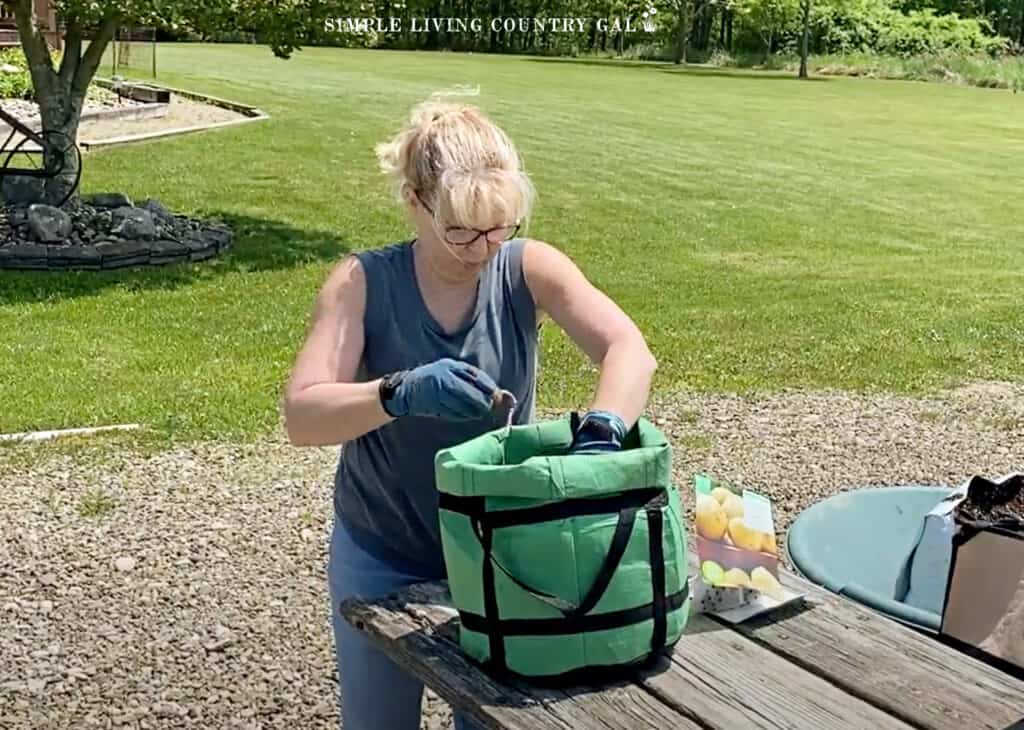
#2. DIY Home Maintenance
Practical homesteading includes learning skills, such as home maintenance, so you can take care of issues around and inside your home without having to pay for costly repairs. You don’t need to be an expert handyman to tackle these projects; all it takes is a little research and some basic tools.
Some Basic Repairs You Can Do at Home
- Fixing a leaky faucet: This is one of the most common plumbing issues in households. A quick fix is to replace the rubber washer inside the faucet. It’s a simple and inexpensive solution that can save you money on your water bill.
- Unclogging drains: Instead of using harsh chemicals, try using a drain snake or plunger to clear out any clogs in your sinks or showers. It’s a much safer and eco-friendly option.
- Patching holes in walls: Whether it’s from hanging pictures or accidents, holes in walls can be easily fixed with some spackle and a putty knife.
- Replacing light fixtures: If you’re tired of old, outdated light fixtures, consider replacing them yourself. Just make sure the electricity is turned off before beginning any work.
- Painting: Giving your walls and furniture a fresh coat of paint can drastically change the look and feel of your home. Plus, it’s an easy DIY project that anyone can do.
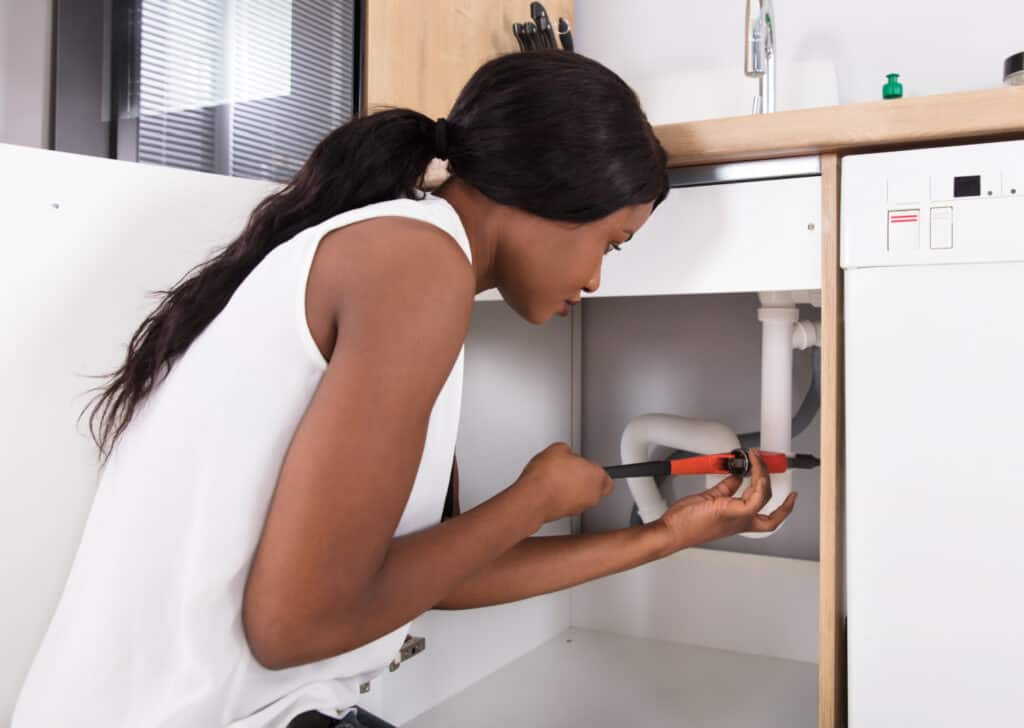
Regular Maintenance Tasks
In addition to these basic repairs, there are also routine maintenance tasks that every homeowner should know how to do. These include:
- Changing air filters: This should be done every 1-3 months to keep your HVAC system running efficiently and to improve air quality in your home.
- Cleaning gutters: Clogged gutters can lead to water damage and other issues, so make sure to clean them out at least twice a year.
- Checking smoke and carbon monoxide detectors: These should be tested regularly to ensure they are working properly. Replace batteries as needed.
- Sealing gaps and cracks: This helps with energy efficiency and keeps pests out of your home.
- Cleaning dryer vents: Lint buildup in dryer vents can be a fire hazard, so make sure to clean them out at least once a year.
Knowing how to do basic home repairs and maintenance tasks not only saves you time and money but also gives you a sense of accomplishment and self-sufficiency.
Heaven’s Harvest Survival Seed Bank Kit (Over 25,000) Fruit & Vegetable Non-GMO Heirloom Seeds for Planting a 3+ Acre Home Garden. 100% Secure: Emergency Weather-Proof Bucket (1-Pack)


#3: Composting and Waste Management
Another important part of practical homesteading is waste management. This includes regular garbage disposal, recycling, and composting.
- Setting up a compost bin – It’s easy to start your own compost bin with just a few simple materials. And the good news is you can compost more than you may realize. Here are a few ideas:
- Produce – Peelings, ends, anything that is cooked or raw
- Coffee grounds and the filter
- Tea bags minus the string and staples
- Cardboard, newspaper, and paper bags
- Cut grass, dry leaves, or wood ash
- Napkins and paper towels
- Livestock manure
- Crushed eggshells
- Houseplant trimmings
- Corn cobs or husks
- Evergreens such as a holiday wreath or tree
- Pinecones
- Nutshells
- Paper egg cartons
- Recycling – Make sure to separate and properly dispose of recyclable materials to reduce your environmental impact.
- Proper garbage disposal – Regularly empty garbage bins and dispose of waste in a responsible manner, following local regulations.
- Start a worm farm – If you have a lot of food scraps, consider starting a worm farm for vermicomposting. These worms can turn your waste into nutrient-rich compost for your garden.
- Get creative with upcycling – Instead of throwing away old items, repurpose them for new uses around the house. For example, an old tire can be turned into a planter or a plastic bottle can become a bird feeder.
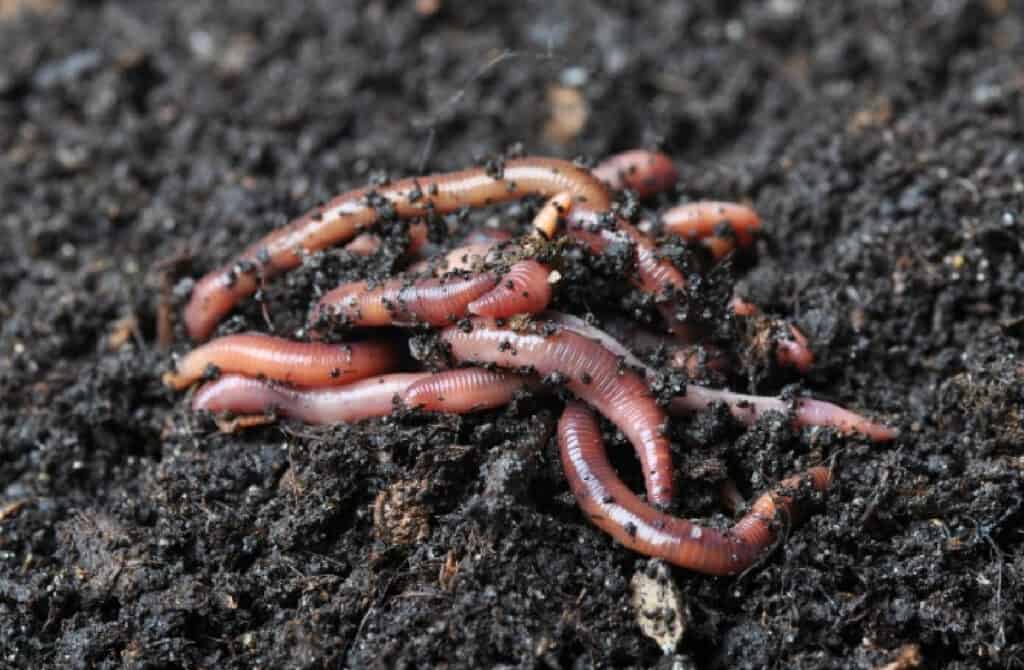
By practicing proper waste management, you can reduce your carbon footprint and contribute to a cleaner environment.
#4. Natural Cleaning Products
Many mainstream cleaning products contain harsh chemicals that can be harmful to both the environment and your health. On the other hand, natural cleaning products are made from plant-based ingredients and do not contain toxic chemicals. Here are a few ideas.
- DIY Laundry Detergent – Make your own laundry detergent using ingredients like washing soda, borax, and essential oils. This will not only save you money but also reduce your use of plastic bottles.
- Vinegar and Baking Soda – These two common household items can be used to create a powerful all-purpose cleaner. Mix equal parts vinegar and water in a spray bottle, and add baking soda for tougher stains.
- Essential Oils – Not only do they smell great, but certain essential oils like tea tree oil and lemon also have antibacterial properties. Add a few drops to your natural cleaners for extra disinfection power.
- Use reusable cleaning cloths – Instead of constantly buying disposable paper towels, invest in reusable cleaning cloths that can be washed and used multiple times.
- Opt for eco-friendly brands – When purchasing cleaning products, look for brands that use environmentally friendly packaging and sustainable ingredients. This helps to reduce waste and promote green practices in the industry.
By using natural cleaning products, you not only protect the environment but also safeguard your health from harsh chemicals.
#5. Entertainment
Finding ways to enjoy downtime that doesn’t cost a fortune is a great way to practice practical homesteading. Here are a few ideas.
- Visit the library – They have great books to read and games, movies, audiobooks, and toys that you can check out for free. The library now includes online classes that you can take to learn new skills such as candle making, home repairs, and food preservation, to name a few.
- Get creative with DIY projects – Use your downtime to learn a new skill or work on a project that you’ve been putting off. Whether it’s woodworking, knitting, or painting, creating something with your own hands can be both fulfilling and entertaining.
- Host game nights – Invite friends and family over for a night of board games, card games, or even outdoor activities like frisbee or cornhole. It’s a fun way to spend time together without spending money.
- Explore your local area – Take a hike, go for a bike ride, or visit nearby parks and attractions. You’ll not only get some exercise but also get to appreciate the beauty of your surroundings.
Practicing practical homesteading doesn’t mean giving up entertainment altogether but rather finding sustainable and budget-friendly ways to enjoy your free time. Being creative and resourceful allows you to have fun without costing a fortune.
In conclusion, incorporating practical homesteading practices into your daily life can not only save you money and promote self-sufficiency, but it can also have a positive impact on the environment. By implementing sustainable methods of food production, home care, and entertainment, you are taking small steps toward creating a more eco-friendly lifestyle. Raise it, grow it, or make it so you don’t have to buy it. This is a great homesteading motto to adopt starting today.




